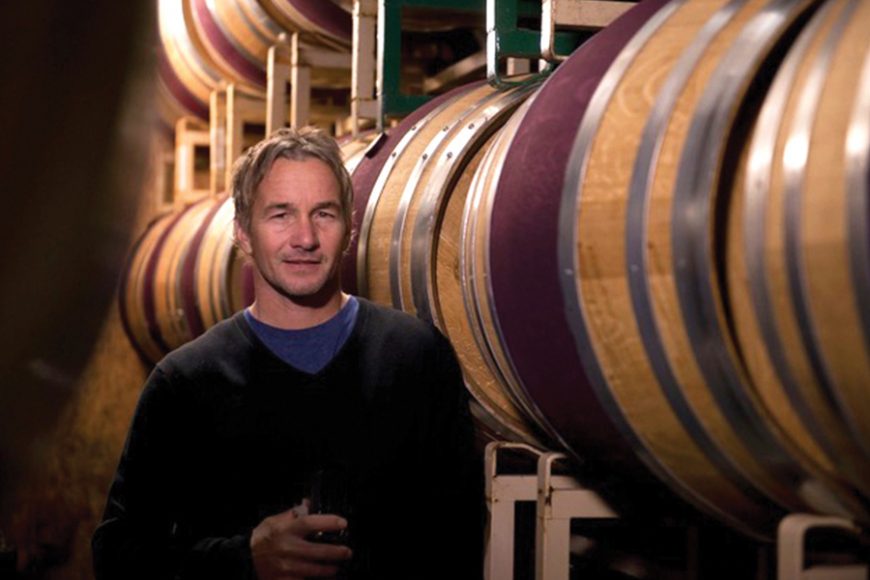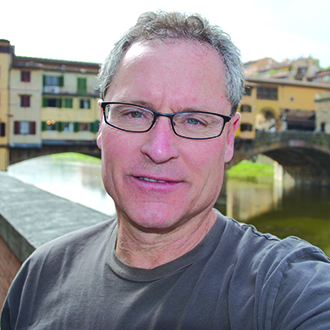The Hahn Family Wines, crafted in the Santa Lucia Highlands and California’s Central Coast, came to be from the collaborative efforts and imaginations of Nicolaus and Gaby Hahn, a couple who as minors fled the hostilities in Europe leading up to World War II with their respective parents.
Nicolaus, from Switzerland, eventually worked in London, Paris and New York. Gaby earned law degrees in Germany and France. They both thought the United States would be a better place to settle down with a business plan and start a family.
In 1979, they purchased Smith & Hook vineyard. In 1980, they produced their first wine. A decade later they bought Doctor’s Vineyard followed by Lone Oak Vineyard in 1992. In 2001, they decided to focus certain plots and then replanted many acres to Pinot Noir and Chardonnay. Today, they have 1,100 acres of estate vineyards, planted to Pinot Noir and Chardonnay but also to Cabernet Sauvignon, Merlot, Grenache, Syrah and Mourvèdre — bringing to market over 5 million bottles a year.
Philip Hahn, Nicolaus and Gaby’s son, is now chairman of Hahn Family Wines. His sister Caroline received her doctor of veterinary medicine degree, specializing in horses. She helps to educate people through guided tastings of Hahn Family Wines. Both of them grew up in the vineyards and lived and learned of the vines and the juice. I recently got an opportunity to dine with Philip, and director of winemaking Paul Clifton, while tasting several of their wines. The takeaway message through their entire inventory is fresh fruit flavors and unmanipulated, honest wines at a great price.
Clifton told me, “All of our wines show balanced oak, for people who don’t like big oak bombs.”
The Santa Lucia Highlands and the adjacent Arroyo Seco, where most of Hahn Family Wines’ grapes are grown, are both perfect for growing their grape selections. It’s cooler than the Russian River Valley and a touch warmer than Burgundy, giving ample time for ripening. The altitude, the soils, the predictable winds all contribute to nuanced and flavorful grapes at harvest to bring to the winery. In the early 1980s, Nicolaus and some of his neighbor winemakers petitioned the state for protected AVA (American Viticultural Area) status as a wine-producing region, which was finally granted in 1987.
The Hahn Family vineyards are farmed certified sustainable — which indicates safe and eco-friendly practices, including using certain good predators to eat or repel bad ones, reducing water and power usage and carefully monitoring the vineyards to fix any problems early.
We began with the 2017 Hahn SLH (Santa Lucia Highlands) Chardonnay, which was oak-aged for 10 months in selected barrels. It showed fresh citrus of mostly pleasant lemon, with notes of peach and pear and a lovely restrained oak, giving the wine an extra dimension in the mouth. It retails for $25 and will never disappoint.
Our next wine was a 2017 Hahn SLH Pinot Noir — tasting of fresh red cherries, strawberry and finely ground white pepper, with a good tannic structure to draw out the taste and mouth feel. The oak presence was there but quietly supporting the fruit flavors. Winemaker Paul said, “We make the best wine we can to represent the AVA.” Retailing in stores or on the Hahn Family Wines website at $30, you will be satisfied.
Philip then poured for us a small plot Pinot Noir from the Lone Oak Vineyard, 2016 Hahn SLH Orchestral PN. This 5-acre plot was planted with multiple Pinot clones similar to what you would find in Burgundy. This wine threw off big aromatics of fresh red fruit, cinnamon, black pepper and other spices. Again the oak was present but well integrated, which enhanced the sensory perception and not so much the flavor. At $90 this might be a special-occasion wine for many of us, but well worth it.
Our next three wines were from the Lucienne collection and the ridges of the Santa Lucia Highlands. The first was a Lucienne 2017 Chardonnay from the Smith Vineyard. This is a classic and well-made Chardonnay ($40), with muted lemon and a balanced, drinkable loveliness. Then we tasted the Lucienne 2017 Pinot Noir from the Smith Vineyard, showing red cherry and raspberry with a soft spiciness of cinnamon and allspice. And lastly we tasted the Lucienne 2017 Pinot Noir from Doctor’s Vineyard — again showing red fruit with an integrated darker fruit presence and a balanced acidity, with hints of spice and leather. The Smith and the Doctor’s Vineyard Pinots both retail for $50 and are a true pleasure and well worth the price.
We also tasted the 2016 Smith & Hook Cabernet Sauvignon and the S & H Proprietary Red Wine Blend, featuring Merlot, Petite Sirah, Malbec and Cabernet Sauvignon. Both of these wines offer darker fruit flavors balanced with restrained oak influence. At $25 each, they are both a steal. Any of the wines we tasted, by the glass or by the bottle, will improve your day.
Write me at doug@dougpaulding.com.


